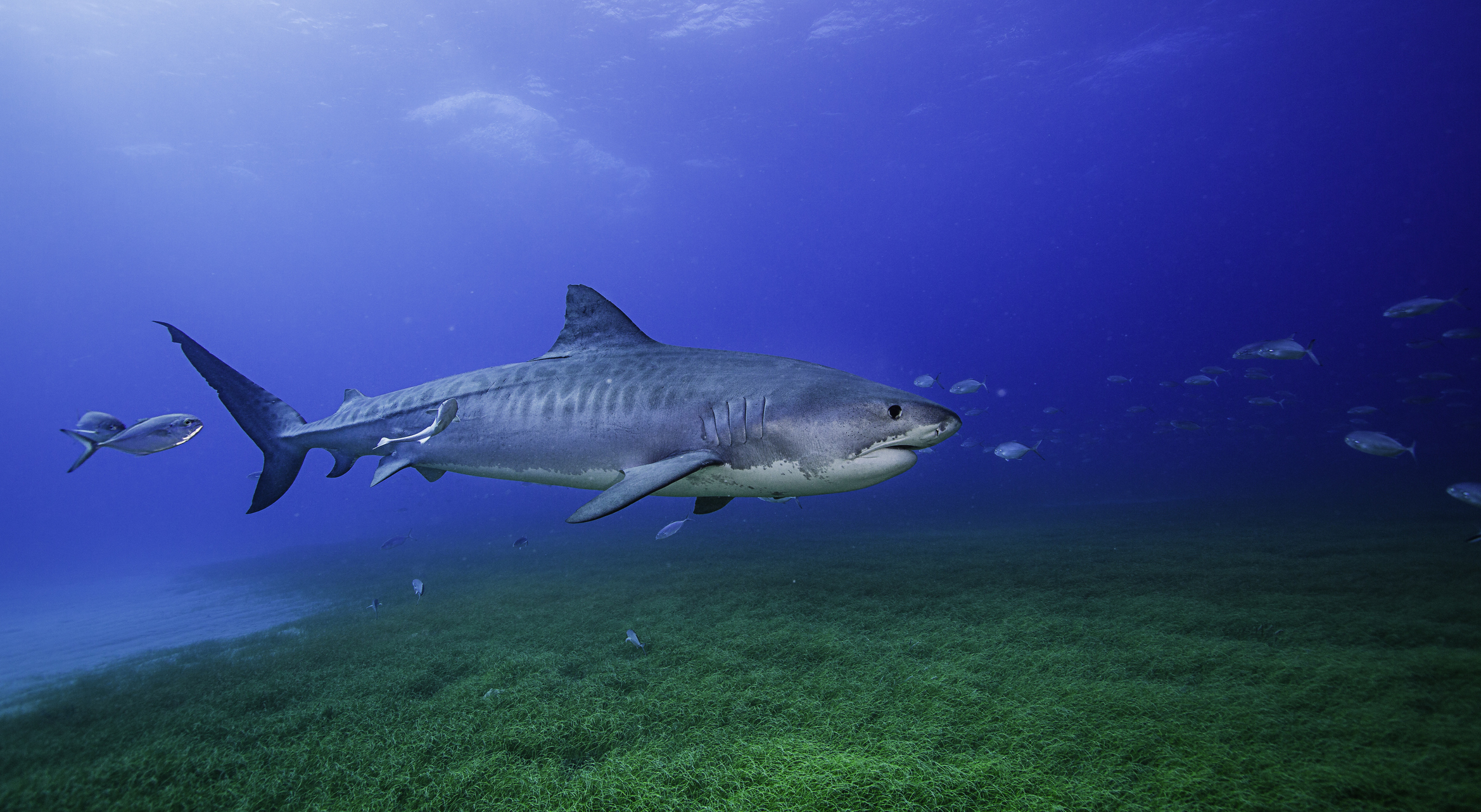Tiger Sharks Carry Cameras to Help Scientists Map Seagrass
A new study found what might be the world’s largest seagrass ecosystem: a 35,500-square-mile meadow in the Bahamas
Margaret Osborne
Daily Correspondent
November 3, 2022 11:52 a.m.

A tiger shark swims above seagrass. Gregory Sweeney via Getty Images
If a human diver tried to map underwater seagrass, it would be slow going. Limited to fairly shallow waters, the person would need to come up for air and take breaks from swimming. So, to better understand where these marine flowering plants grow, a team of scientists turned to some unusual allies: sharks.
In a new study published Tuesday in Nature Communications, researchers mapped out what might be the world’s largest seagrass ecosystem using cameras and trackers attached to tiger sharks (Galeocerdo cuvier).
They estimate the patch, located in the Bahamas, could be as large as 35,521 square miles—double the size of a seagrass ecosystem off the coast of Australia that was previously thought to be the world’s largest. The new find expands the known seagrass coverage globally by about 41 percent, per the study.
The massive meadow of seagrass, which is known to store carbon, is good news for the climate.
“This discovery should give us hope for the future of our oceans. It demonstrates how everything is connected,” lead author Austin Gallagher, the chief executive officer of the nonprofit Beneath the Waves, tells Nick Kilvert of the Australian Broadcasting Corporation (ABC). “The sharks led us to the seagrass ecosystem in the Bahamas, which we now know is likely the most significant blue carbon sink on the planet.”
More:
https://www.smithsonianmag.com/smart-news/tiger-sharks-help-scientists-map-out-worlds-largest-seagrass-ecosystem-180981065/
